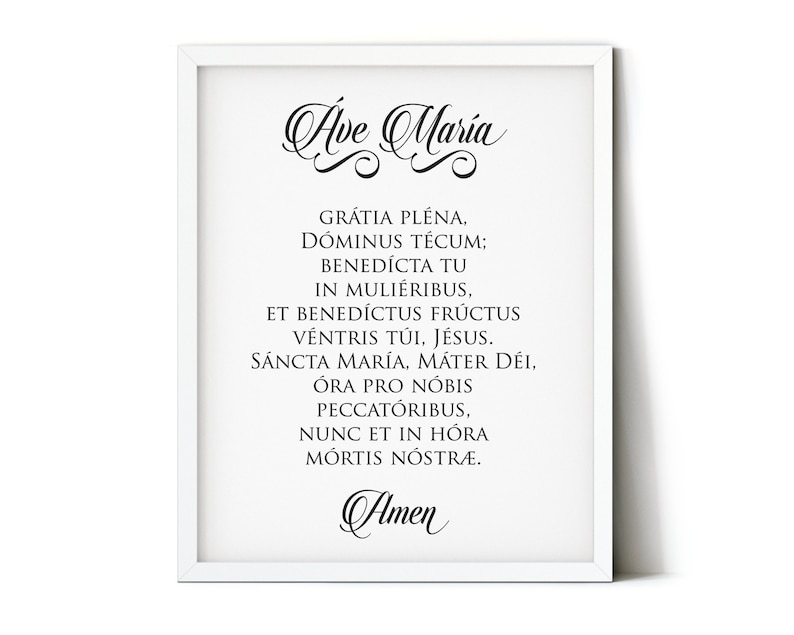
Adding her name made it clear that Mary was the person the prayer talked to. Saint Thomas Aquinas said that by the mid-thirteenth century, the Western churches had added only one word - "Mary" - to the Biblical verses the prayer came from. The Catholic Encyclopedia says that the Hail Mary was not changed until about 1050. There are different ideas about when the Hail Mary was changed to today's version. It is a Greek word that means "the one who gives birth to God." "Theotokos" is the title given to Mary in the Eastern Churches. Blessed art thou amongst women, and blessed is the fruit of thy womb, for thou hast given birth to the Saviour of our souls. Mother of God and Virgin, rejoice, Mary full of grace, the Lord is with thee. The same thing can be translated differently into English:

Blessed are you among women, and blessed is the fruit of your womb, for you have borne the Saviour of our souls. Theotokos Virgin, rejoice, Mary full of grace, the Lord is with you. These greetings are still used in modern Greek. The first word of greeting, χαῖρε, chaíre, is translated "Hail." This means "Rejoice" or "Be glad." This was a normal greeting in Koine Greek. Like all of Saint Luke's Gospel, this phrase was first written in Koine Greek. In the first phrase from Saint Luke's Gospel, the Angel Gabriel is greeting Mary. The word "Mary" was added after the word "Hail." The entire prayer was "Hail Mary, full of grace." We know this from Saint Thomas Aquinas's writings about the prayer. In Western Europe, in the mid-13th century, the prayer was just a few words. When the Hail Mary was first created, it was much shorter than it is now.

(This means: "You and your child ( Jesus) are both blessed.") You are blessed.") The second is "Blessed art thou amongst women and blessed is the fruit of thy womb" ( Luke 1:42). (In Simple English, this means: "Be glad. The first is "Hail, full of grace, the Lord is with thee, blessed art thou amongst women" ( Luke 1:28). The Hail Mary uses two phrases from Saint Luke's Gospel.

Some Protestant denominations also use the Hail Mary. So do many other groups within Christianity, including Anglicans, Independent Catholics, and Old Catholics. The Eastern Orthodox and Oriental Orthodox also use the prayer. In Roman Catholicism, the Hail Mary is the most prevalent prayer in the Rosary. When a person says a Hail Mary, they asks Mary to pray for them. Some things were also added to the prayer during the 13th century (the 1200s). Most of the prayer comes from the Gospel of Luke. Hail Mary is a Christian prayer to Mary, the mother of Jesus. Madonna by Batoni, an example of Marian art


 0 kommentar(er)
0 kommentar(er)
